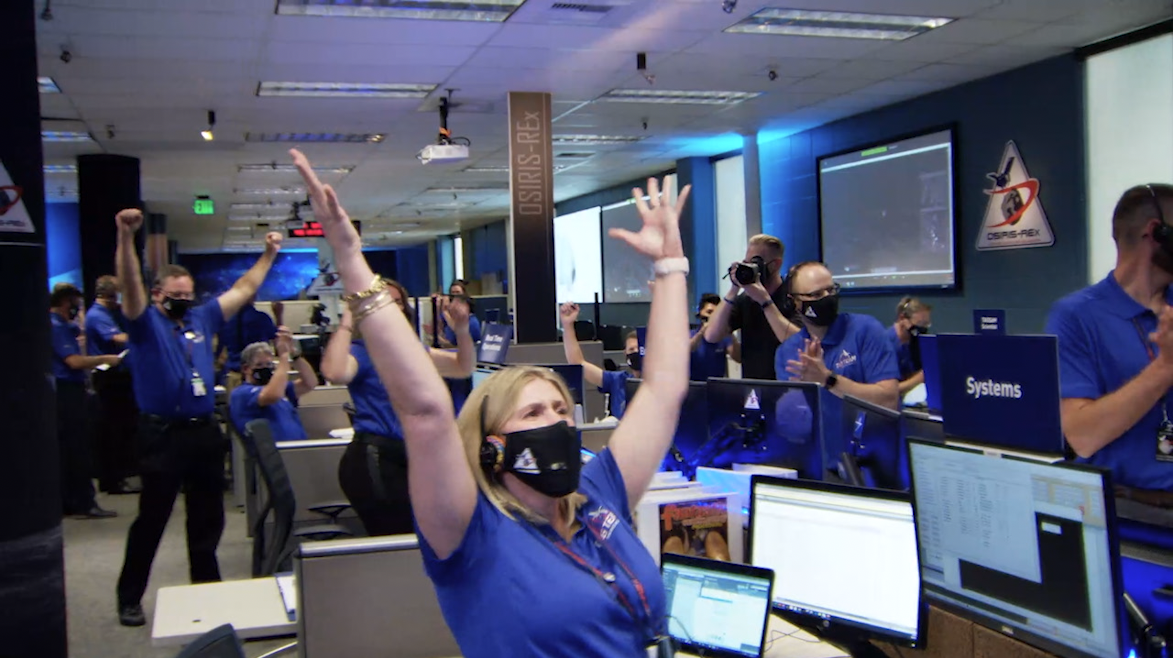OSIRIS-REx Post-TAG Briefing
NASA is hosting a press briefing on Oct. 21 to unveil new videos of the OSIRIS-REx sample collection attempt.
The Origins, Spectral Interpretation, Resource Identification, Security, Regolith Explorer (OSIRIS-REx) spacecraft unfurled its robotic arm on Oct. 20, and in a first for the agency, briefly touched an asteroid to collect dust and pebbles from the surface for delivery to Earth in 2023.
This well-preserved, ancient asteroid, known as Bennu, is currently more than 200 million miles (321 million kilometers) from Earth. Bennu offers scientists a window into the early solar system as it was first taking shape billions of years ago and flinging ingredients that could have helped seed life on Earth. If the sample collection event, known as “Touch-And-Go” (TAG), provided enough of a sample, mission teams will command the spacecraft to begin stowing the precious primordial cargo to begin its journey back to Earth in March 2021.
1. Lauretta - TAG Movie 1
Credit: NASA/Goddard/University of Arizona
2. Lauretta - TAG Movie 2
Credit: NASA/Goddard/University of Arizona
3. Lauretta - TAG Movie 3
Credit: NASA/Goddard/University of Arizona
1. Burns - TAGSAM Explained
OSIRIS-REx descended to the surface of asteroid Bennu to collect a sample of fine-grained material from site Nightingale using its TAGSAM instrument.
Credit: NASA/Goddard/CI Lab

2. Burns - Nightingale Hazard Map and TAG Location
Credit: NASA/Goddard/University of Arizona
3. Burns - Backaway
After collecting the sample of Bennu, OSIRIS-REx fired its thrusters and backed away to a safe distance from the asteroid.
Credit: NASA/Goddard/CI Lab/SVS
1. Freund - Sample Imaging Verification
OSIRIS-REx will use its SamCam instrument to visually inspect the TAGSAM head and verify sample collection.
Credit: NASA/Goddard/CI Lab
2. Freund - Sample Mass Measurement
To measure the mass of the collected sample, OSIRIS-REx will extend its TAGSAM arm and perform a spin maneuver.
Credit: NASA/Goddard/CI Lab

1. Bridenstine
NASA Administrator Jim Bridenstine. Credit: NASA

1. Zurbuchen
NASA Science Associate Administrator Dr. Thomas H. Zurbuchen. Credit: NASA
For More Information
See NASA.gov
Credits
Please give credit for this item to:
NASA's Goddard Space Flight Center
-
Nasa administrator
- James Bridenstine (NASA/HQ)
-
Host
- Nancy Neal-Jones (NASA/GSFC)
-
Presenters
- Thomas H. Zurbuchen (NASA/HQ)
- Dante Lauretta (The University of Arizona)
- Rich Burns (NASA/GSFC)
- Sandra Freund (Lockheed Martin)
-
Director
- Michael Starobin (KBR Wyle Services, LLC)
-
Graphics
- Dan Gallagher (USRA)
-
Graphic designer
- Heather Roper (The University of Arizona)
-
Floor director
- Rani Gran (NASA/GSFC)
-
Technical director
- John Caldwell (Advocates in Manpower Management, Inc.)
-
Audio technician
- Mike Velle (KBR Wyle Services, LLC)
-
Technical support
- Pat Kennedy (KBR Wyle Services, LLC)
- Aaron E. Lepsch (ADNET Systems, Inc.)
-
Support
- Erin Morton (The University of Arizona)
Release date
This page was originally published on Wednesday, October 21, 2020.
This page was last updated on Sunday, March 16, 2025 at 11:22 PM EDT.
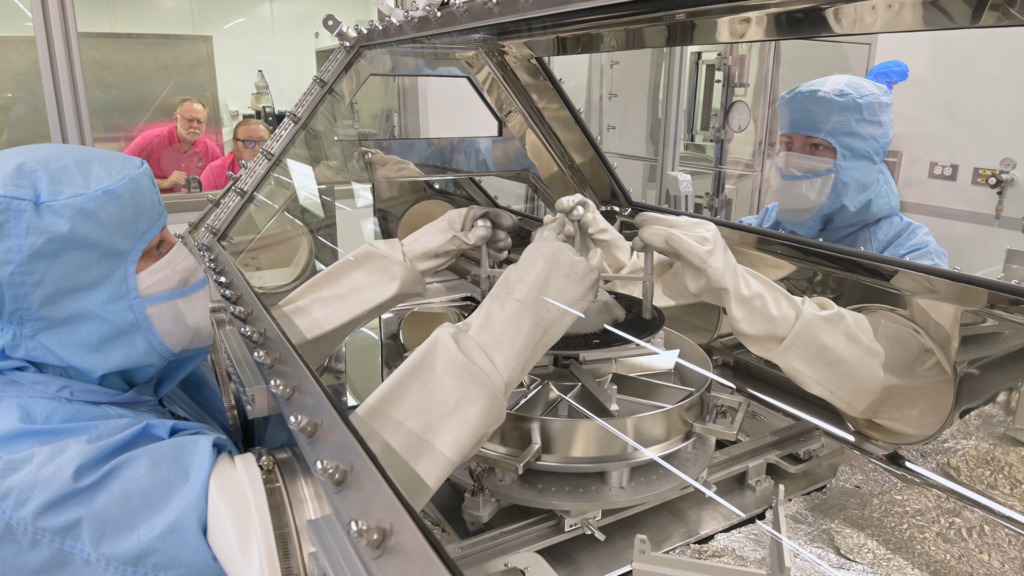
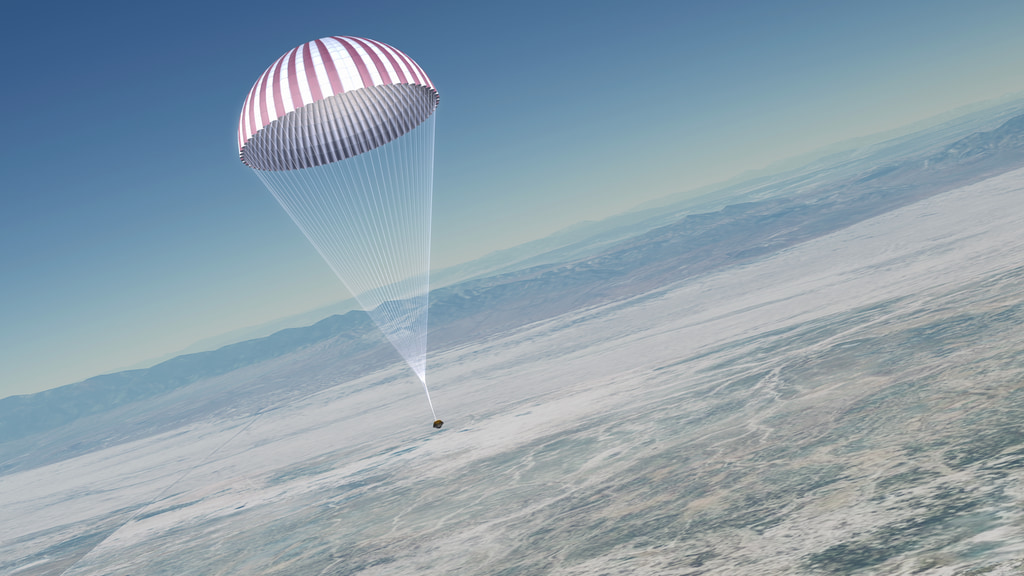
![Ride along with OSIRIS-REx during the thrilling finale of its journey to Bennu and back.Complete transcript available.Universal Production Music: “A Sense of Urgency” and “Rise to the Challenge” by Daniel Marantz and Michael James Burns, Raydia Music library [PRS]; “Fragments of Time” by Timothy Robert Shortell, Scores of Hypersonic Music [BMI]Watch this video on the NASA Goddard YouTube channel.](/vis/a010000/a014400/a014406/OSIRIS-REx_Journeys_End_Preview_V3_print.jpg)
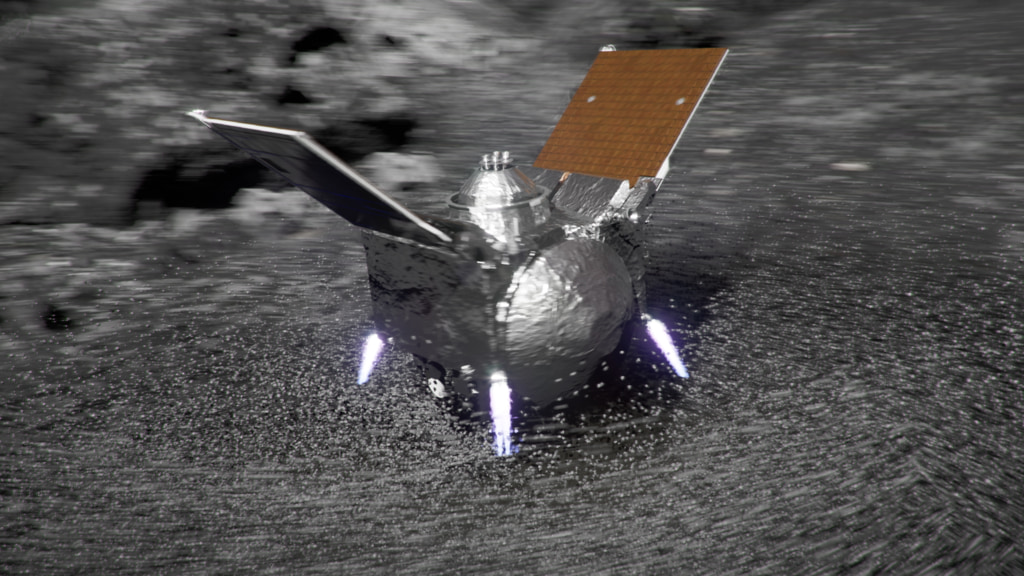
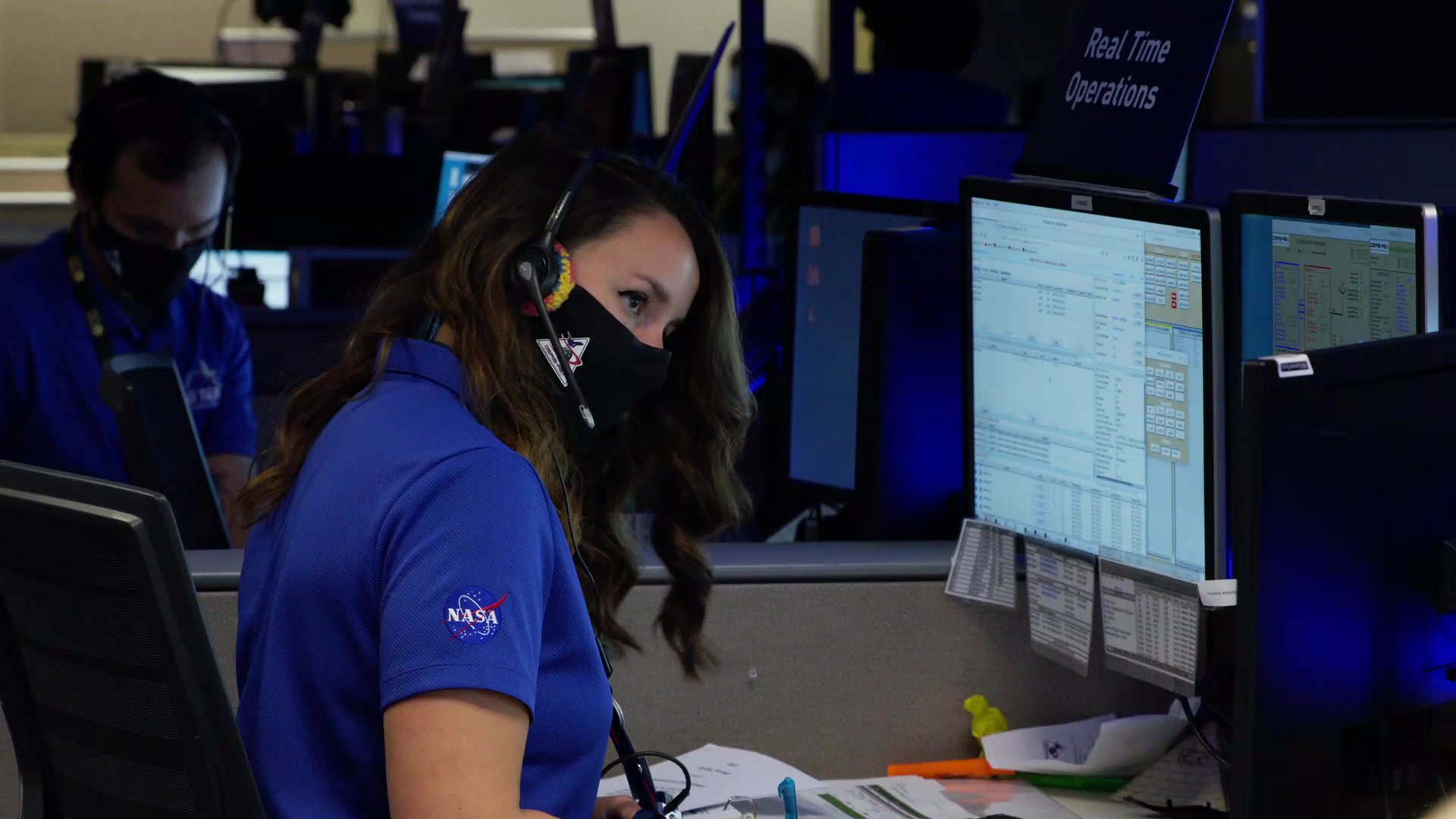
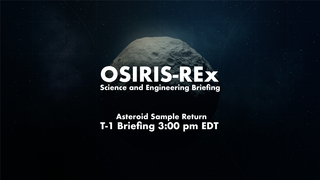
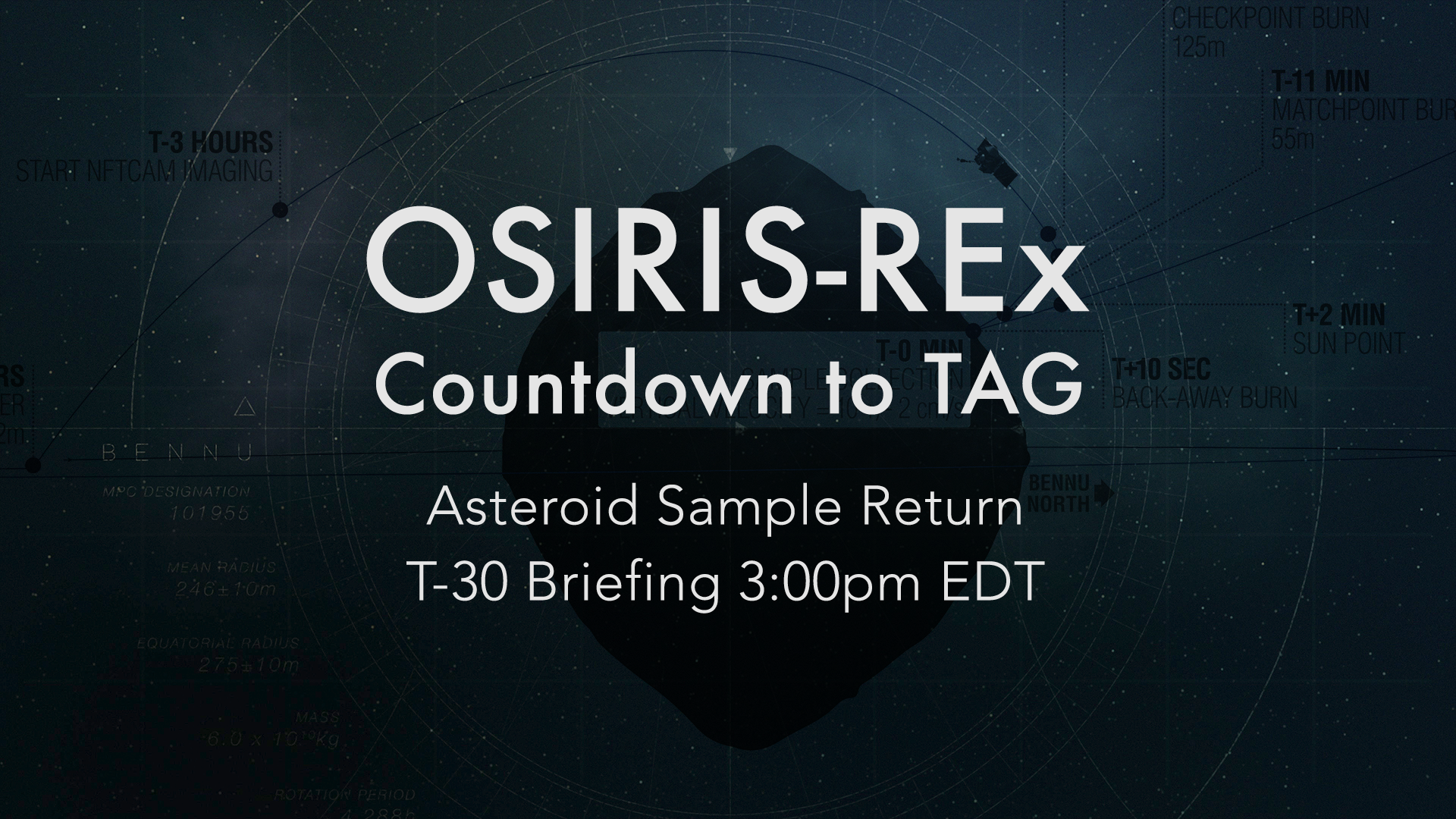

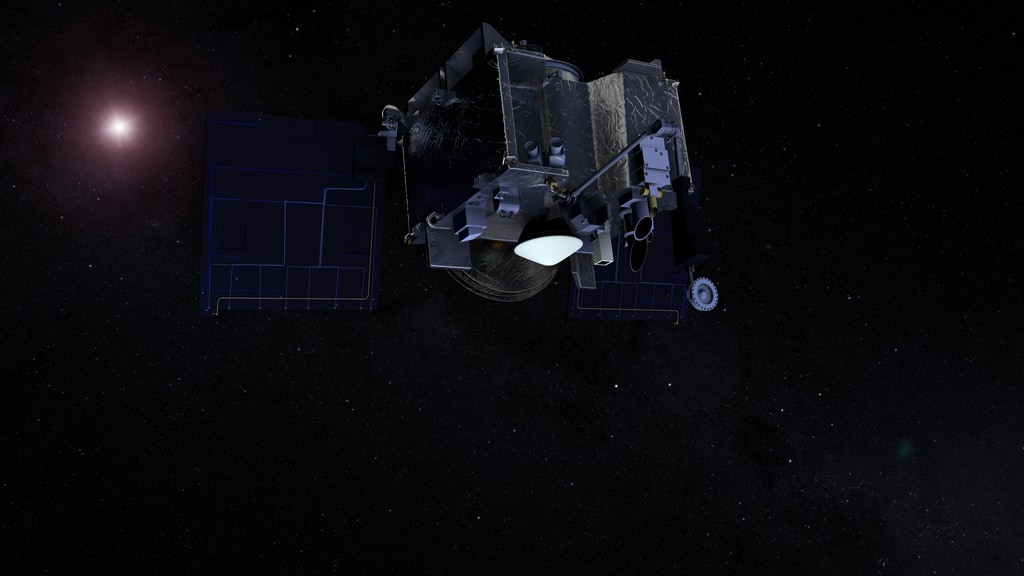
![Scientists studying the Bennu samples have discovered evidence of a wet, salty environment from 4.5 billion years ago that created the molecular building blocks of life.Complete transcript available.Universal Production Music: “Future Tense” by Gresby Race Nash [PRS]; “Take Off” by Nicholas Smith [PRS]; “Big Decision” by Gresby Race Nash [PRS]; “Waiting for the Answer” by Gresby Race Nash [PRS]Watch this video on the NASA Goddard YouTube channel.](/vis/a010000/a014700/a014774/14774-Bennu-Organics-Thumbnail-V4.jpg)
